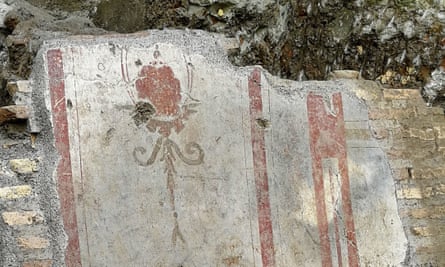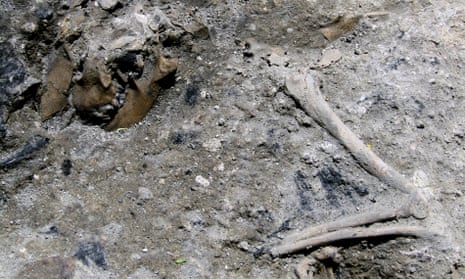Digging for Rome’s new underground network has unearthed the charred ruins of an early 3rd-century building and the 1,800-year-old skeleton of a crouching dog that apparently perished in the same blaze that caused the structure to collapse.
Archaeologists said on Monday that they had made the discovery on 23 May while examining a 10-metre (33-foot) hole bored near the city’s ancient Aurelian walls as part of construction work for the Metro C line.
The culture ministry described the finds as “A Pompeii-like scene”evoking comparisons with the inhabitants trapped by the eruption of Vesuvius in 79 AD preserved where they died in its ashes.
“The fire that stopped life in this environment allows us to image life in a precise moment,” said Francesco Prosperetti, the head of Rome’s archaeological ruins and excavations.
Experts say the ruins might be from an aristocrat’s home at the foot of the nearby Celian Hill or from a nearby military barracks that had been explored in other excavations for the subway line.

Rome has such a limited metro system in part because underground construction works inevitably reveal buried slices of life from one of the ancient world’s most important capitals.
The latest finds include a stool or table leg, two tables, a wooden railing or handrail, frescoed wall fragments with a reddish hue and black-and-white mosaic floor tiles on the upper floor of the collapsed building. They offer clues to how Romans lived and built during the mid-imperial period of the Roman empire.
The archaeologists said the fire had hardened the artefacts, preserving them with a a quality of preservation rarely found.
“The discovery of a charred, wooden ceiling represents a unique event for the city of Rome,” the ministry said.
On the ground floor, segments of brickwork decorated with frescoes date to the era of Emperor Septimius Severus, whose rule spanned the end of the 2nd and start of the 3rd centuries, according to the archaeologists.
